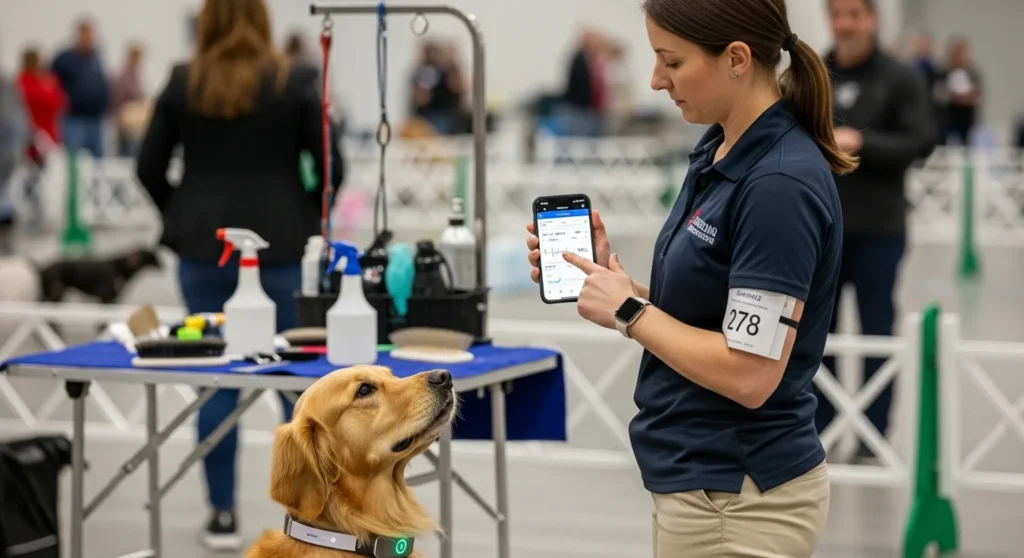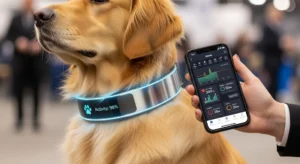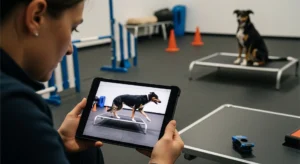The world of competitive dog showing has entered a new era where traditional handling skills meet cutting-edge technology. Smart devices and health monitoring systems are revolutionizing how we prepare, train, and care for show dogs, offering insights that were impossible to obtain just a few years ago. For serious competitors and breeders, understanding and implementing these technologies can mean the difference between good performance and championship-level success.
The Rise of Smart Technology in Dog Shows
Modern show dog management extends far beyond grooming tables and training rings. Today’s successful handlers are leveraging sophisticated wearable technology, health monitoring systems, and data analytics to optimize every aspect of their dogs’ performance and well-being. These tools provide real-time information about activity levels, stress indicators, sleep quality, and physical condition — all critical factors that influence how a dog performs in the ring.
The integration of technology doesn’t replace traditional handling skills; rather, it enhances them. By combining decades of breeding knowledge and expert grooming techniques with data-driven insights, handlers can make more informed decisions about training schedules, conditioning programs, and show day preparation.
Smart Collars and GPS Tracking for Show Dogs
Smart collars have become invaluable tools for show dog owners, offering features that extend well beyond basic identification. Modern devices like Whistle Health and Fi collars combine GPS tracking with comprehensive health monitoring, creating a complete picture of your dog’s daily activities and location.
Location Security and Travel Safety
One of the primary concerns for show dog handlers is security, especially when traveling to competitions. GPS-enabled collars provide real-time location tracking, sending instant alerts if your dog moves beyond a designated safe zone. This feature is particularly crucial during busy show weekends when dogs are in unfamiliar environments with multiple handlers, spectators, and other animals present.
The peace of mind that comes from knowing you can locate your valuable show dog within seconds cannot be overstated. Whether your dog slips away during a grooming session or gets separated in the chaos of a large venue, GPS tracking ensures you can recover them quickly and safely.
Activity and Exercise Monitoring
Maintaining optimal fitness is essential for show dogs, and smart collars excel at tracking activity levels throughout the day. These devices measure steps, active minutes, and rest periods, allowing you to ensure your dog is getting the right amount of exercise without overexertion. This data becomes especially valuable when adjusting conditioning programs or managing dogs recovering from minor injuries.
Health Monitoring Technology for Peak Performance
Understanding your show dog’s health status is crucial for consistent ring performance. Advanced monitoring systems now track metrics that were previously only available through veterinary visits, giving handlers unprecedented insight into their dogs’ physical condition.
Heart Rate and Stress Detection
Many premium smart collars include heart rate monitoring capabilities that can detect stress indicators based on heart rate variability. This feature is particularly valuable for identifying anxiety or discomfort that might not be immediately visible. A dog experiencing stress may not perform at their best in the ring, and early detection allows handlers to address issues before show day.
By establishing baseline measurements during calm periods at home, you can quickly identify when your dog’s stress levels are elevated. This information helps you adjust your ring day logistics and warm-up routines to keep your dog comfortable and confident.
Sleep Quality and Recovery Tracking
Quality sleep is essential for maintaining a show dog’s physical condition and mental sharpness. Smart collars track sleep patterns, including total sleep time, sleep quality, and disturbances throughout the night. This data can reveal issues such as discomfort from travel, anxiety in new environments, or health problems that might affect performance.
Handlers can use sleep data to optimize their dogs’ rest schedules, especially during intensive show circuits when multiple competitions occur over several days. Understanding when your dog needs additional rest or recovery time prevents burnout and maintains consistent performance levels.
Temperature and Environmental Monitoring
Show dogs often face challenging environmental conditions, particularly during outdoor summer events. Some advanced monitoring systems include temperature sensors that alert handlers when conditions become dangerous. Combined with smart planning and proper heat safety protocols, this technology helps prevent heat stress and related health emergencies.
Environmental monitoring extends beyond temperature to include humidity levels and air quality, all factors that can impact your dog’s comfort and performance. These metrics become especially important when traveling to shows in different climates or seasons.
Training and Conditioning Applications
Smartphone applications designed specifically for dog training and conditioning have revolutionized how handlers approach preparation. These apps allow you to set training goals, track progress over time, and receive personalized recommendations based on your dog’s activity data.
Video Analysis Tools
Recording and analyzing your dog’s movement is crucial for perfecting gaiting and stacking. Modern smartphones equipped with slow-motion video capabilities and specialized analysis apps let you break down every aspect of your dog’s movement. You can compare footage from training sessions with ring performances, identifying areas for improvement with precision that wasn’t possible in the past.
Many handlers create video libraries organized by date, competition, and specific skills, building a comprehensive record of their dog’s development. This visual history becomes invaluable for tracking long-term progress and making adjustments to training programs. For detailed guidance on training fundamentals, refer to resources from organizations like the American Kennel Club’s conformation programs.
Nutrition and Weight Management Technology
Maintaining optimal weight and body condition is essential for show dogs. Smart feeding systems and nutrition tracking apps help handlers monitor food intake with precision, ensuring dogs receive the exact nutrition they need for peak condition without excess weight that could impact their appearance or movement.
Some advanced systems include automatic feeders that dispense precise portions at scheduled times, maintaining consistency even when travel schedules are demanding. Integration with activity tracking helps handlers adjust feeding amounts based on exercise levels, preventing weight fluctuations during intensive show seasons.
Data Integration and Analysis
The true power of smart technology emerges when different data streams are integrated into a comprehensive picture of your dog’s health and performance. Many modern platforms allow you to combine information from multiple devices and applications, creating dashboards that display trends, patterns, and potential concerns at a glance.
This holistic approach to data analysis helps handlers make proactive decisions rather than reactive ones. For example, noticing a gradual decrease in activity levels combined with changes in sleep patterns might indicate the early stages of an injury or illness, allowing for intervention before it becomes serious enough to affect show performance.
Choosing the Right Technology for Your Needs
With numerous devices and applications available, selecting the right technology for your show dog program requires careful consideration. Start by identifying your primary concerns — whether that’s security, health monitoring, training optimization, or comprehensive data tracking — and choose devices that excel in those areas.
Consider factors such as battery life, durability, water resistance, and subscription costs when evaluating options. Read reviews from other show dog handlers, and don’t hesitate to reach out to manufacturers with questions about specific features. Many companies offer trial periods, allowing you to test devices before committing to long-term use.
For additional insights on maintaining your show dog’s condition through all seasons, explore resources on Whole Dog Journal, which covers health and training topics comprehensively.
Implementing Technology Without Losing the Human Touch
While smart technology offers tremendous benefits, it’s essential to remember that nothing replaces the handler’s experience, intuition, and the bond developed through consistent training and care. Use technology as a tool to enhance your understanding and decision-making, not as a replacement for observation and hands-on assessment.
The most successful show dog programs combine traditional handling expertise with modern technological advantages. By maintaining this balance, you ensure your dog receives both the data-driven optimization that technology provides and the personal attention that builds championship-level performance and temperament.
The Future of Smart Technology in Dog Shows
As technology continues to advance, we can expect even more sophisticated tools designed specifically for show dogs. Artificial intelligence and machine learning algorithms are already being developed to provide predictive insights about health, performance, and optimal training schedules based on individual dogs’ data patterns.
Handlers who embrace these technologies now position themselves at the forefront of competitive dog showing, gaining advantages that translate directly to success in the ring. By staying informed about new developments and thoughtfully integrating appropriate technologies into your program, you ensure your show dogs have every opportunity to reach their full potential.
Smart technology integration represents not just a trend but a fundamental shift in how we approach show dog management. The handlers who succeed in tomorrow’s competitive landscape will be those who skillfully blend traditional expertise with technological innovation, creating programs that optimize every aspect of their dogs’ preparation, performance, and wellbeing.



